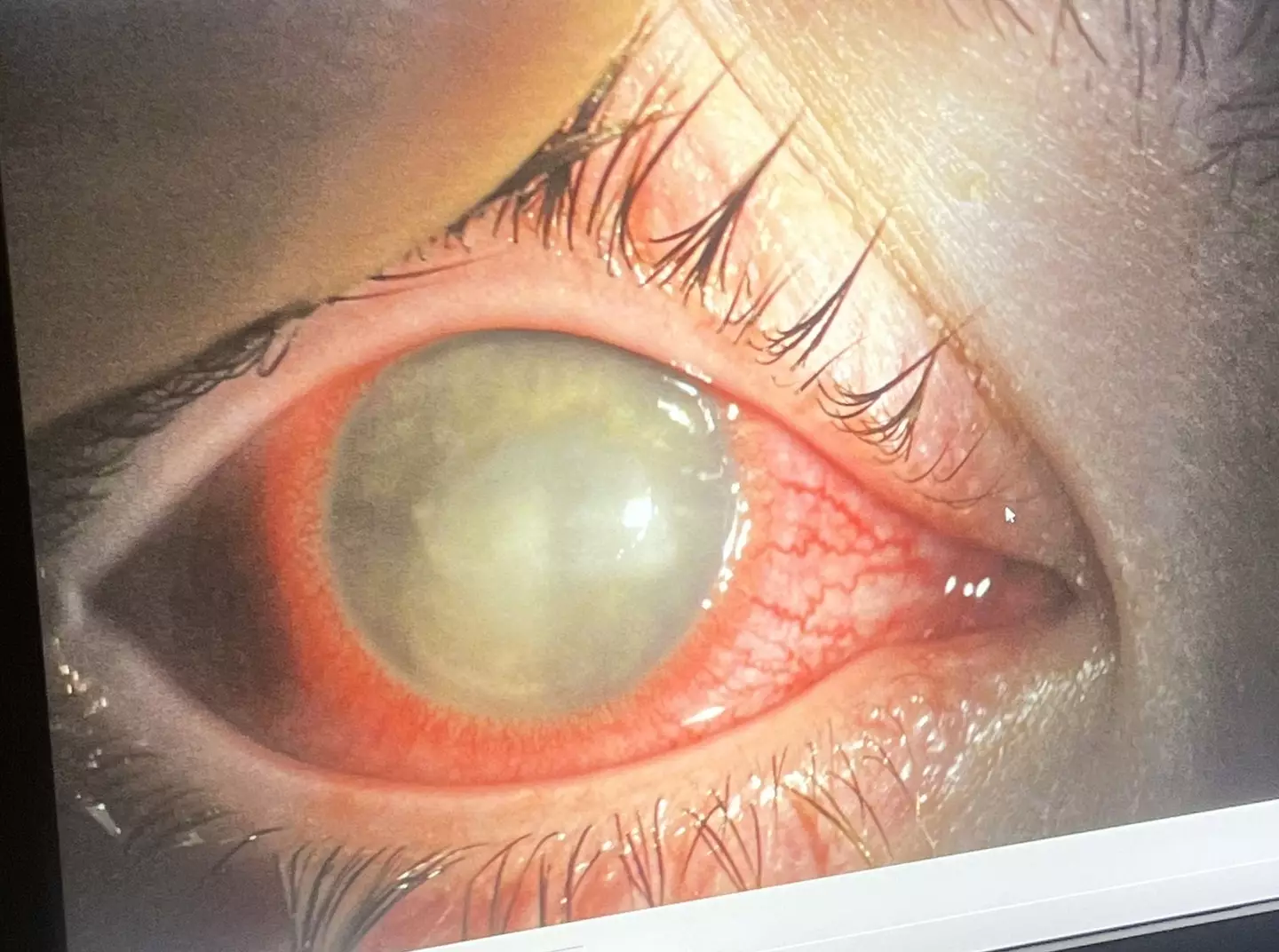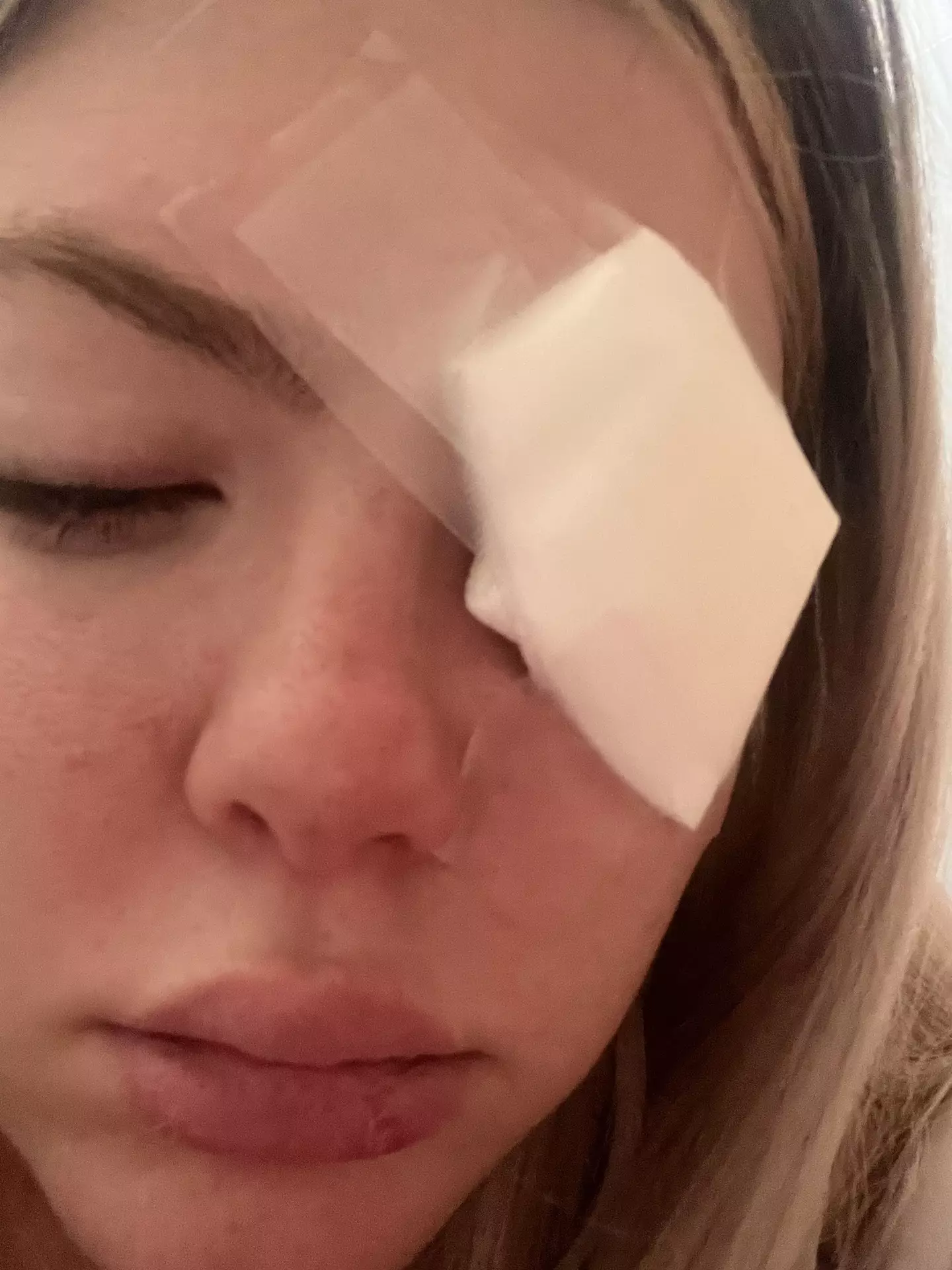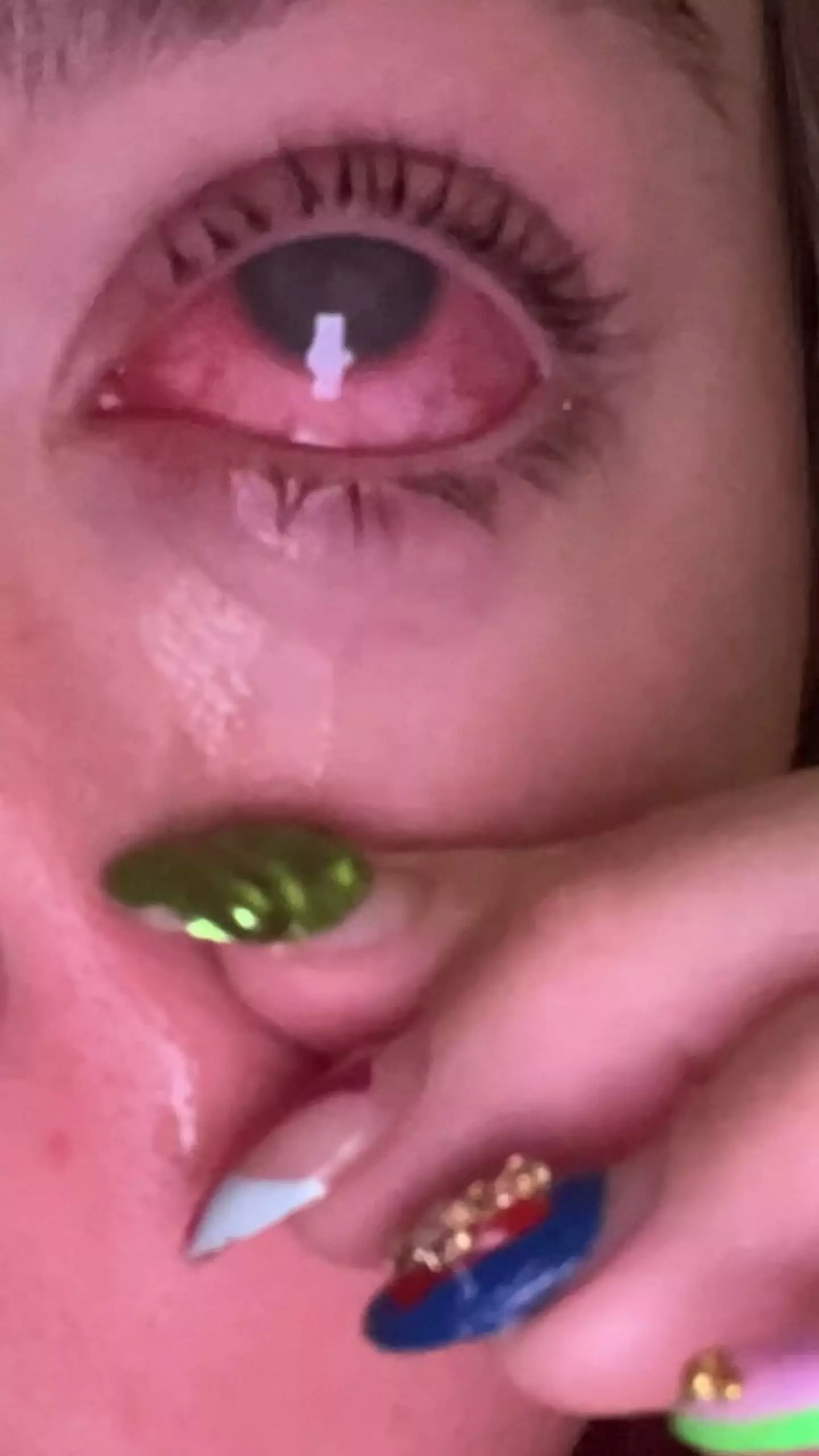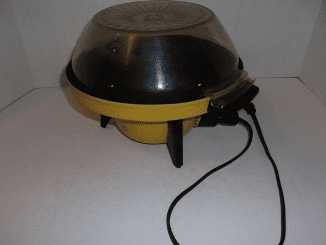A day at the beach in Alabama turned into a life-changing ordeal for 23-year-old Brooklyn McCasland. What started as minor eye irritation, which she assumed was just a grain of sand, evolved into a devastating infection that left her blind in one eye. Brooklyn’s story sheds light on a rare but serious condition called Acanthamoeba Keratitis (AK), a reminder of the potential risks of improper contact lens use.
Brooklyn’s Unexpected Battle with Acanthamoeba Keratitis

In August, Brooklyn spent a carefree day at the beach with friends, unaware that her next few months would be filled with pain and medical uncertainty. Initially, she felt a minor irritation in her right eye, dismissing it as sand. “I thought I had something in my eye, just a piece of sand or something,” she recalled. But soon, that discomfort escalated into what she described as “the worst pain she has ever experienced.”
Even after visiting her optician, Brooklyn received a simple diagnosis of a “common infection” and was prescribed antibiotic drops. However, the pain persisted, and her condition rapidly worsened. She eventually went completely blind in her right eye, unable to work or maintain her daily routines. The true cause of her suffering remained elusive until she was referred to a cornea specialist.
What is Acanthamoeba Keratitis (AK)?
Acanthamoeba Keratitis, or AK, is a rare eye infection caused by a microscopic organism called Acanthamoeba. It’s a particularly aggressive pathogen that can lead to severe corneal damage, potentially resulting in blindness if not treated promptly.
How the Infection Occurs
The Acanthamoeba parasite thrives in water sources such as lakes, tap water, and even poorly treated pools. Contact lens users are at higher risk because the parasite can easily adhere to lenses, particularly when lenses are exposed to non-sterile water.
- How It Spreads: AK often begins when contact lenses come into contact with contaminated water. Brooklyn believes that swimming at the beach while wearing her contacts was the primary cause of her infection, a common but risky practice among contact lens wearers.
- Symptoms: Early symptoms include itching, redness, and blurred vision, which can be mistaken for less severe conditions like conjunctivitis. As the infection progresses, patients may experience extreme pain, a sensation of glass in the eye, and significant vision impairment.
Brooklyn’s Painful Journey and Medical Challenges
Brooklyn’s initial symptoms were mild, but they soon turned severe. Her optician initially dismissed the symptoms as a routine infection, prescribing antibiotics that did little to relieve her pain. “It kind of felt like glass in your eye,” she said, describing her agony. Despite multiple visits, her condition remained undiagnosed, leading to frustration and worsening symptoms.
- Delayed Diagnosis: After weeks of suffering, Brooklyn was referred to a cornea specialist located four hours away from her home. Scans confirmed that she had contracted Acanthamoeba Keratitis. By that time, the damage to her eye was irreversible.
- The Psychological Toll: The journey took a heavy emotional toll on Brooklyn, who struggled to cope with both physical pain and the uncertainty of her vision. “Not being able to see is really, really hard,” she admitted. “I definitely took it for granted.”
The Long Road to Recovery: Surgery and Financial Strain

Brooklyn’s ordeal is far from over. Her medical team has recommended a cornea transplant as the best option to potentially restore her vision, but the procedure comes with a high cost and a lengthy recovery period.
- Cornea Transplant: Brooklyn’s cornea transplant is expected to cost around $5,000 (£3,850). It could take up to a year to fully heal, with no guarantees of success.
- Expensive Medication: Brooklyn has also been prescribed $62,000 (£47,756) worth of medication, which she hopes will be covered by insurance. These medications are necessary to treat the infection and prepare her eye for potential surgery.
- Fundraising Efforts: A friend, Jordan Yoder, has started a GoFundMe campaign to help cover Brooklyn’s treatment expenses and daily costs while she’s unable to work. As a former barista, Brooklyn has lost her source of income due to her vision problems and is relying on financial support to pay for groceries, bills, and medical expenses.
Understanding the Risks of Contact Lens Misuse
Brooklyn’s story is a stark reminder of the potential dangers associated with improper contact lens use. Many contact lens wearers are unaware of the risks posed by exposing lenses to non-sterile water.
Key Risks of Contact Lenses and Water Exposure

- Swimming in Contacts: Swimming while wearing contacts is strongly discouraged by optometrists, as it significantly increases the risk of infection. Water, especially in lakes, pools, and hot tubs, can be a breeding ground for harmful microorganisms like Acanthamoeba.
- Tap Water and Lens Care: Washing contact lens cases with tap water is another risky habit. Tap water can contain bacteria and parasites that adhere to lenses, making infection more likely.
- Proper Lens Hygiene: Contact lens wearers should use only sterile solutions for cleaning and storing lenses, and they should avoid wearing lenses in any water environment.
Brooklyn admitted that she was unaware of these risks: “I wore [contacts] everywhere: to the pool, showered in my contacts, and swam in my contacts. Now I know you’re not supposed to do it, but I’ve done that for forever.”
Brooklyn’s Mission to Raise Awareness
As she navigates the challenges of recovery, Brooklyn is determined to use her experience to educate others about the dangers of Acanthamoeba Keratitis and the importance of proper contact lens hygiene.

- Spreading the Message: Brooklyn hopes her story will encourage others to take eye care seriously and avoid behaviors that can increase the risk of infection. “Just because it’s a rare condition, it doesn’t mean it can’t happen to you,” she warns.
- Reflecting on Her Experience: Despite the painful ordeal, Brooklyn is grateful to have answers and a plan for potential recovery. “It was a relief to have everything answered,” she said, reflecting on her diagnosis.
Conclusion: The Life-Changing Impact of a Rare Eye Infection
Brooklyn’s story serves as a powerful reminder of the importance of eye health and the hidden dangers associated with improper contact lens use. A seemingly harmless day at the beach led to a rare and devastating infection that drastically altered her life. As Brooklyn awaits a cornea transplant and continues to raise awareness, her message is clear: always prioritize eye safety and don’t take vision for granted. The consequences of neglecting eye care can be life-altering, but they can also be prevented with the right precautions.


